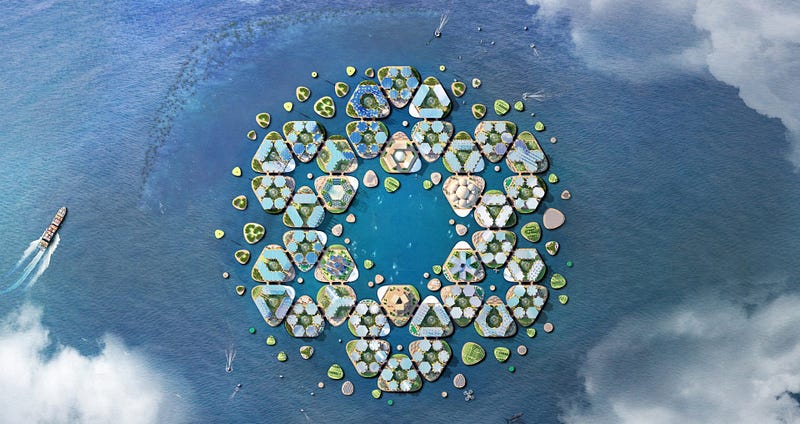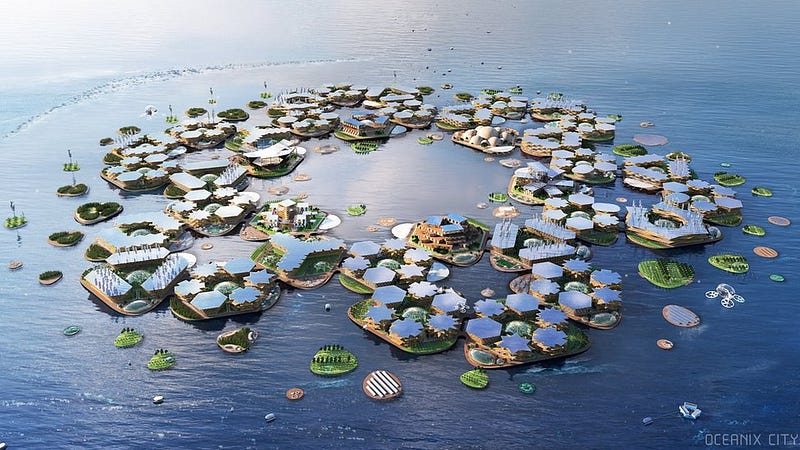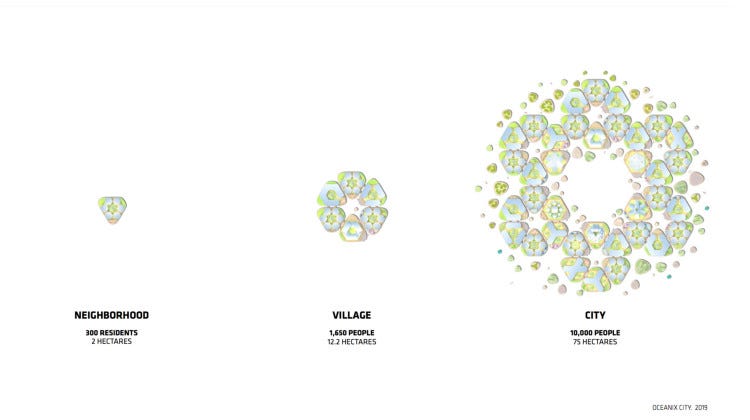Innovative Floating City: A Sustainable Future Awaits
Written on
Chapter 1: Introduction to Oceanix City
The groundbreaking Oceanix City is set to be constructed off the coast of South Korea, pioneering the concept of a floating metropolis designed to withstand flooding.

Oceanix City Design — [Photo: Bjarke Ingels Group, Press materials, Free to use]
The renowned Bjarke Ingels Group (BIG), known for its innovative floating projects, is behind this ambitious initiative. Although the plans for this flood-resistant city were initially devised in 2019, a formal agreement was only recently established with Busan and the United Nations Human Settlements Program. Oceanix City is projected to house up to 10,000 residents, with architects emphasizing its resilience against the challenges posed by rising sea levels.
Section 1.1: Climate Change Inspiration
This project is a direct response to the pressing issue of climate change. As sea levels continue to rise, the UN predicts that by 2050, a staggering 90% of major coastal cities may face flooding risks. The vision of the Bjarke Ingels Group aims to serve as a global lifeline. The design includes six interconnected platforms, each spanning over 20,000 square meters, creating distinct floating communities.
Subsection 1.1.1: Platform Construction
The platforms will be constructed on land and later towed to their designated locations. The designers assert that these structures will adapt to changing water levels. Each platform will feature seven-story buildings capable of accommodating 300 residents. The materials used will include bamboo, and the buildings will be outfitted with flat roofs equipped with solar panels. Additionally, a system to harvest potable water from rainfall is planned, along with agricultural areas for food production, including fields and fish farms surrounding the settlements.


Chapter 2: Urban Living Redefined
Oceanix City embodies the "10-minute city" concept, allowing residents to access essential services such as restaurants, workplaces, and recreational areas within minutes. The design incorporates pathways and bicycle lanes connecting the various platforms, all organized around a central port.
The first video provides insights into the development of the world's inaugural floating city, emphasizing its innovative design and sustainable features.
The second video explores South Korea's efforts to establish this floating city, detailing its potential impact on urban living and environmental resilience.
The creators intend for only electric vehicles, including those capable of floating, to operate within this cutting-edge city. This initiative aims to seamlessly connect the floating city with the mainland, although discussions regarding various technological solutions are still ongoing.
Section 2.1: Location Significance
The choice of Busan's coastal area is strategic, as environmental experts warn that Haeundae Beach could vanish by 2030 due to rising waters. A study published in Nature Sustainability reveals that Busan has experienced the most significant flooding impacts over the past decade in South Korea. The first prototype of the floating platform is anticipated to be completed by 2025, with hopes that initial residents will move in by then. UN officials assert that “instead of battling the water, we should learn to coexist with it.” This could mark a pivotal moment in urban planning as humanity confronts the challenges ahead.